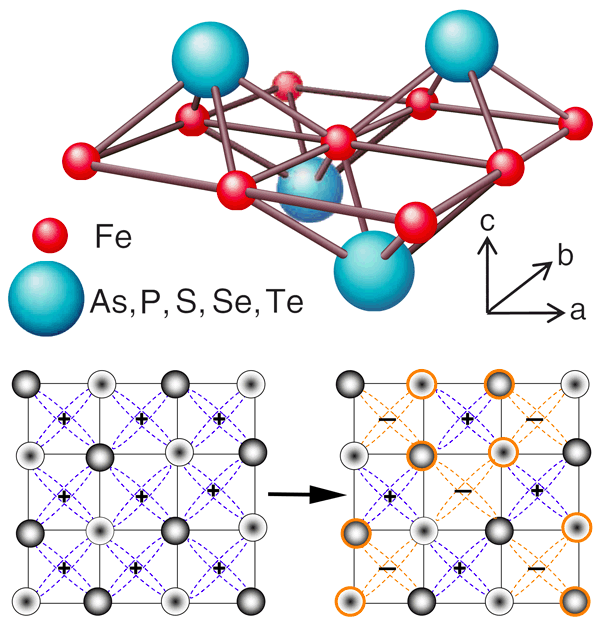The discoveries since 2008 of a large and chemically rather diverse class of high-temperature iron-based superconductors with maximal superconducting temperatures reaching above 50 K have renewed the excitement in superconductivity. In addition to offering the promise of new high-temperature superconductors, these materials have posed some great fundamental scientific challenges: Is there a microscopic theory that unifies our understanding of the superconductivity of these varied materials? What may this theory be? Are there deep connections between the new superconductors and the older, copper-based high-temperature superconductors (cuprates)?
Prof. Jiangping Hu and his postdoctoral Dr. Ningning Hao from Institute of Physics, Chinese Academy of Sciences, present a symmetry-based effective microscopic theory of simplicity that makes an extraordinary stride, in a new direction, toward the ultimate answers to these challenging questions. [Phys. Rev. X 2, 021009 (2012)]
The current favorite effective microscopic theory for iron-based superconductors employs all five orbitals associated with the d electrons of an iron atom. While this theory offers flexibility in terms of allowing for fair agreement with fully microscopic (first principles) electronic structure calculations, it is unable, given its vast parameter space, to explain the robustness of the electron-pairing symmetry observed across many different members of the family. In a remarkable contrast, their theory involves only two iron orbitals, but the orbitals are deeply connected through the S4 lattice symmetry characteristic of this family of new superconductors. Despite its simplicity (and very few free parameters), the two-orbital model can explain the big changes seen in the band structures across different materials in the family.
Equally, if not more, remarkably, the apparently different electron-pairing symmetries seen in the new superconductors and the older cuprates turn out to be, within the framework of their model, connected by a mathematical (“gauge”) transformation, which is not unlike a transformation connecting two different reference frames. The model strongly suggests, therefore, a unifying way to understand both the new superconductors and the older cuprates. The problem of studying the pairing symmetry in the iron-based superconductors becomes then the well-studied problem of pairing symmetry in the cuprates. Their introduction of the S4-symmetry-related two orbitals provides a new basic platform from which many exciting possibilities of predicting, discovering, and understanding novel properties of iron-based superconductors can be launched.
The work is selected by APS with a special viewpoint reported in“Physics: spotlighting exceptional research” [Physics 5, 61 (2012)]。
 |
| Figure: The basic Fe-As or Fe-Se trilayer structure in iron-based superconductors and a sketch of the s-wave pairing symmetry to a d-wave pairing symmetry under gauge transformation.(Image by Jiangping Hu et al.) |


